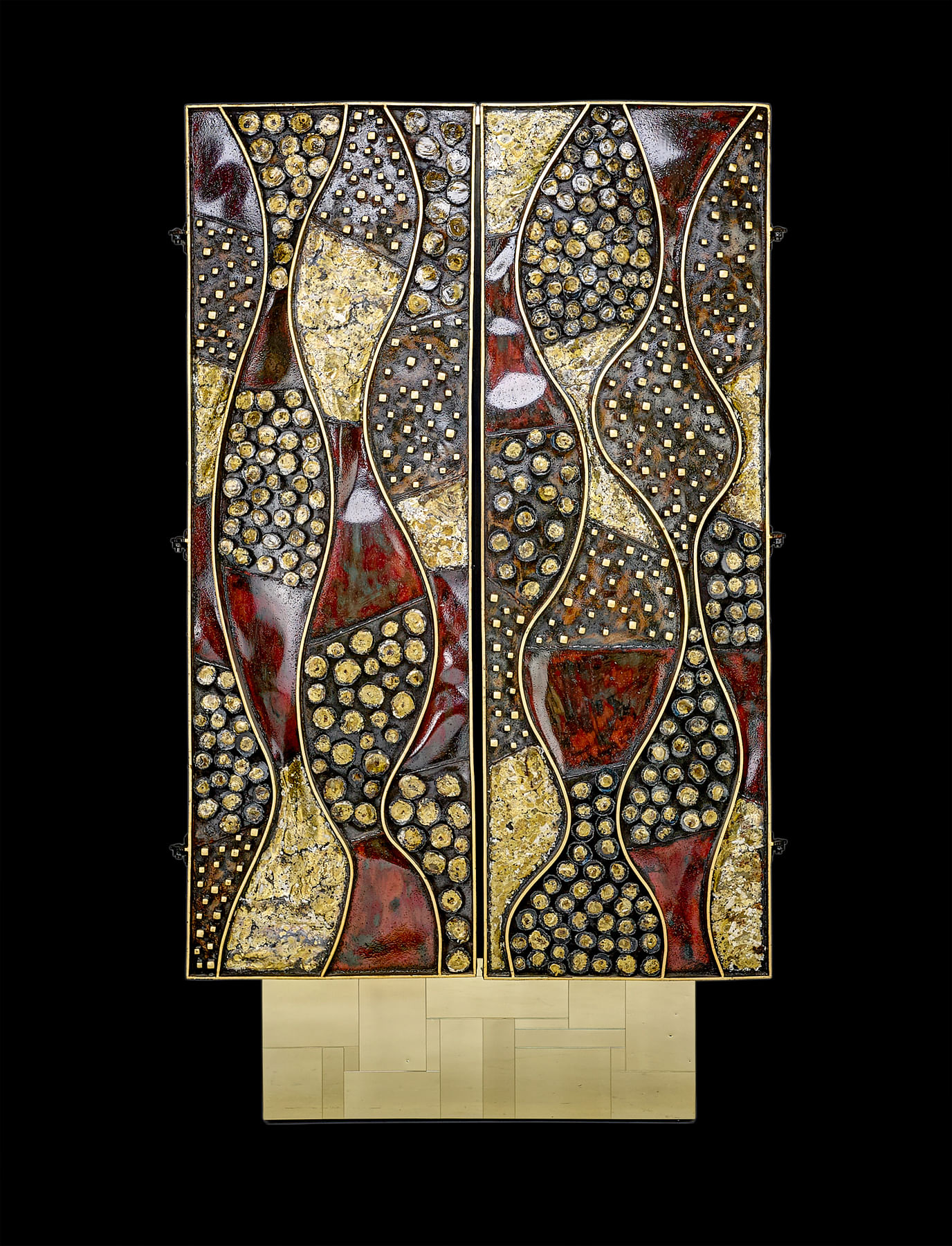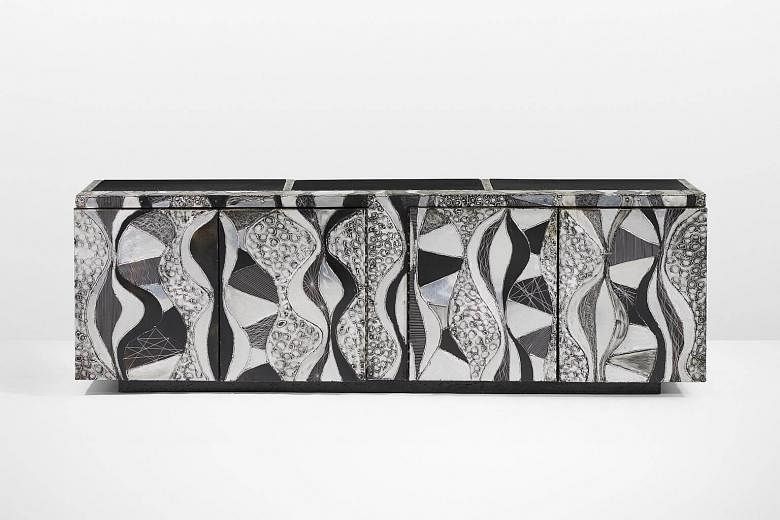NEW YORK • Perhaps the most remarkable thing about furniture designer Paul Evans' posthumous ascent is not that he has gone from dustbin to deified over the last decade, or that his work has been collected by big names such as singers Gwen Stefani and Lenny Kravitz.
It is that his signature pieces - 1960s credenzas that look as if they are encrusted with barnacles - have been met with turned-up noses from powerful people in the design world.
J.F. Chen and Wyeth, two leading galleries for mid-century modern design in America, have ignored Evans, even as his offbeat works break auction records: A 1967 Evans wavy- front cabinet sold for US$287,500 (S$410,600) via auction house Rago Arts in 2015, moving into the upper echelons of American furniture.
Three coffee-table books on Evans have been published in the last decade. In 2014, the James A. Michener Art Museum in Doylestown, Pennsylvania, staged a retrospective of his work.
A furniture-world Forrest Gump, Evans - who grew up in Newtown, Pennsylvania - morphed with the times. He understood fashion, embraced youth culture and built custom pieces for celebrities such as singer Roy Orbison.

That ability "to transform as the culture around him was shifting" gave him posthumous appeal, said Ms Kirsten Jensen, chief curator at the Michener Art Museum.
In the folksy 1960s, Evans designed ornate welded steel-front cabinets that drew inspiration from the sculpture work of Picasso, Harry Bertoia and Julio Gonzalez.
At the height of his success during the disco 1970s, he teamed up with furniture behemoth Directional and put out the now-coveted chrome and brass-accented Cityscape line.
In 1980, disco fell out of favour and Evans' business hit the skids, so he moved to New York and designed beds and wall units that could be rotated or raised via remote control.
By the mid-1980s, he was no longer making a living and he began drinking heavily. On March 6, 1987, he shut down his business and drove from New York to his vacation home on Nantucket, Massachusetts. The next morning, he went for a cup of coffee on his porch, had a heart attack and died, said his assistant Dorsey Reading. He was 55.
No obituary for Evans appeared in The New York Times. When veteran folk art dealer John Sollo located a pile of Evans pieces at an antiques show in Massachusetts shortly after his death, it took months to identify who had designed them.
But tastemakers came around over the years. One of the first to buy Evans' pieces was celebrity hairstylist Oribe, whose clients included singers Cher and Jennifer Lopez.
By the late 1990s, Mr Sollo and Mr David Rago formed Rago Arts, where they promoted Evans. The low number of unique, hand-welded pieces made them highly collectible just as the distinction between art and furniture was breaking down.
The question now is whether prices for Evans' pieces can go higher.
Rago Arts is selling nine Evans pieces on Jan 22, including a 1977 2.1m-tall cabinet made with bronzed steel and 23-karat gold leaf. Could this break the record?
Mr Rago said: "There's no precedent for the piece, so there's no precedent for the price."
NYTIMES

